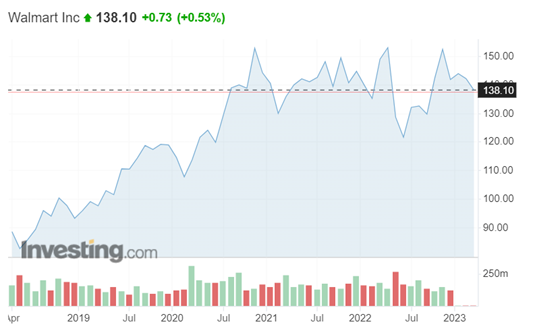It did not take long for me to find an article on Investing, where it was written that Tyson Foods is shutting down two US chicken plants with nearly 1700 workers. But I thought to myself ok, this could have impact in USA. But what is happening in the other parts of the world? A little more digging brought me to many articles reporting that the bird flu is on the rise again, and therefore they need to kill the diseased chickens. Now this made a lot of sense to me, as we are facing now the typical supply and demand scenario – there is the same or bigger demand for eggs, but there is much less supply, causing the prices of eggs to skyrocket. All of this reminded me of a TV series called Billions, where similar scenario was happening, but intentionally, as they tried to manipulate the market.
Reading forward through the articles, it became quite clear to me that inflation plus supply demand is causing these prices. I picked one random store, to check how they are doing lately. I decided to check Walmart, one of the biggest store chains in the world. Finviz provided me with very useful articles about the store in question. Despite the rise of price for eggs, Walmart decided to make Easter meals affordable, to satisfy every customer. I totally forgot that Easter is just around the corner. But this year it seems it will be in smaller size as last year. Back to Walmart, I thought that it is very clever idea to make baskets affordable, so people are not shortened for such big holiday. They are also launching their own online shopping platform, called Walmart+, which will allow customers to buy many products online, including groceries. Now that solves many hours walking around the store, I thought. Despite this good news, I also found one bad, however not that critical. Walmart closed both stores in Portland and left the city. I think I found enough for my fundamental analysis, so as always I moved to technical part.
For the last two years, the price of a stock was more or less stable, as it was moving between 120 USD and the highest 150 USD. Before that, in 2018, the price of a stock was at 83 USD. This means, that in few years the price of a stock rose for almost 100%. * Based on the chart, I also think that there is a strong support level on the mark of 121 USD. Based on the fundamental part that I have found, and technical analysis, I have decided to enter the trade and open a position of Walmart on long.

Movement of Walmart stocks in the last five years. (Source: Investing) *
* Past performance is no guarantee of future results.








